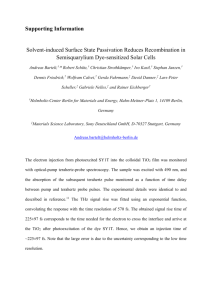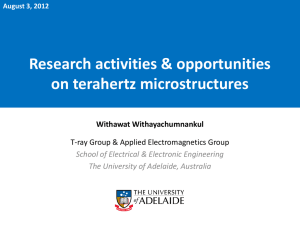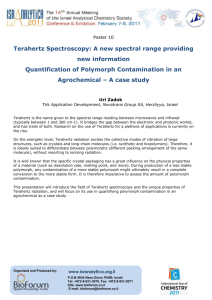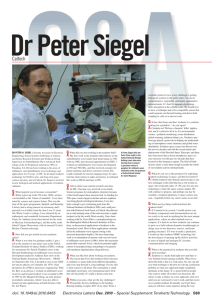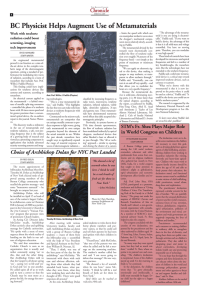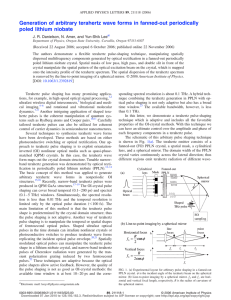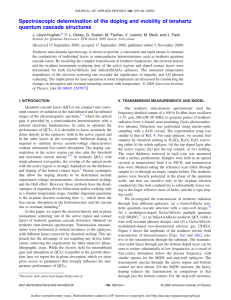Terahertz Technology in Outer and Inner Space
advertisement
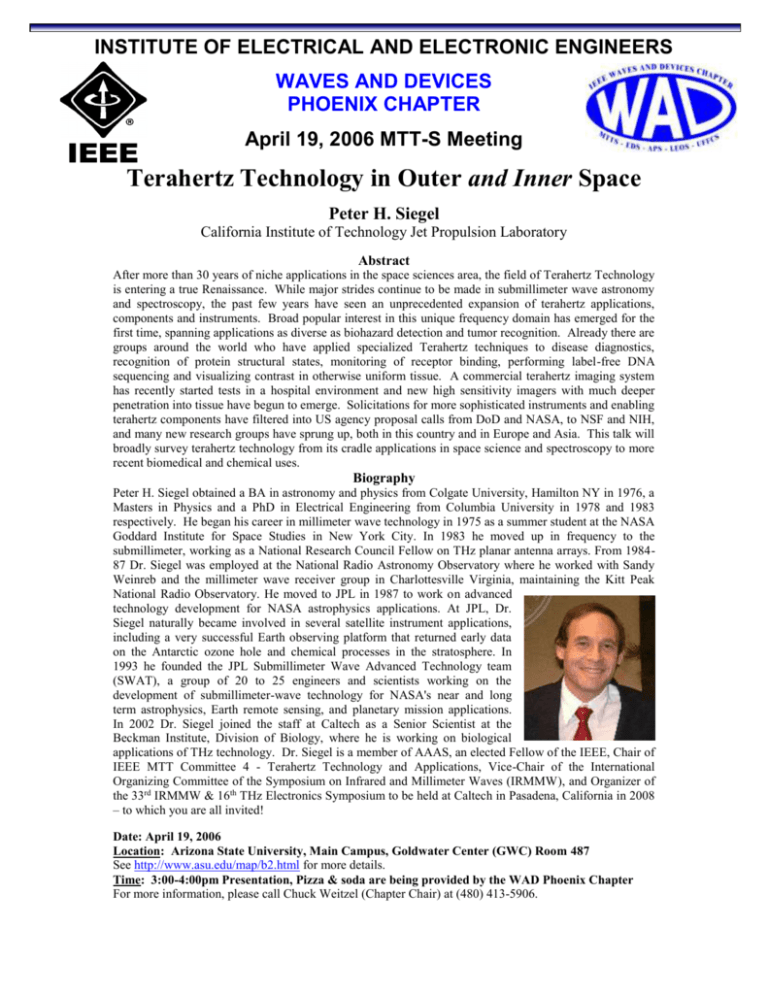
INSTITUTE OF ELECTRICAL AND ELECTRONIC ENGINEERS WAVES AND DEVICES PHOENIX CHAPTER April 19, 2006 MTT-S Meeting Terahertz Technology in Outer and Inner Space Peter H. Siegel California Institute of Technology Jet Propulsion Laboratory Abstract After more than 30 years of niche applications in the space sciences area, the field of Terahertz Technology is entering a true Renaissance. While major strides continue to be made in submillimeter wave astronomy and spectroscopy, the past few years have seen an unprecedented expansion of terahertz applications, components and instruments. Broad popular interest in this unique frequency domain has emerged for the first time, spanning applications as diverse as biohazard detection and tumor recognition. Already there are groups around the world who have applied specialized Terahertz techniques to disease diagnostics, recognition of protein structural states, monitoring of receptor binding, performing label-free DNA sequencing and visualizing contrast in otherwise uniform tissue. A commercial terahertz imaging system has recently started tests in a hospital environment and new high sensitivity imagers with much deeper penetration into tissue have begun to emerge. Solicitations for more sophisticated instruments and enabling terahertz components have filtered into US agency proposal calls from DoD and NASA, to NSF and NIH, and many new research groups have sprung up, both in this country and in Europe and Asia. This talk will broadly survey terahertz technology from its cradle applications in space science and spectroscopy to more recent biomedical and chemical uses. Biography Peter H. Siegel obtained a BA in astronomy and physics from Colgate University, Hamilton NY in 1976, a Masters in Physics and a PhD in Electrical Engineering from Columbia University in 1978 and 1983 respectively. He began his career in millimeter wave technology in 1975 as a summer student at the NASA Goddard Institute for Space Studies in New York City. In 1983 he moved up in frequency to the submillimeter, working as a National Research Council Fellow on THz planar antenna arrays. From 198487 Dr. Siegel was employed at the National Radio Astronomy Observatory where he worked with Sandy Weinreb and the millimeter wave receiver group in Charlottesville Virginia, maintaining the Kitt Peak National Radio Observatory. He moved to JPL in 1987 to work on advanced technology development for NASA astrophysics applications. At JPL, Dr. Siegel naturally became involved in several satellite instrument applications, including a very successful Earth observing platform that returned early data on the Antarctic ozone hole and chemical processes in the stratosphere. In 1993 he founded the JPL Submillimeter Wave Advanced Technology team (SWAT), a group of 20 to 25 engineers and scientists working on the development of submillimeter-wave technology for NASA's near and long term astrophysics, Earth remote sensing, and planetary mission applications. In 2002 Dr. Siegel joined the staff at Caltech as a Senior Scientist at the Beckman Institute, Division of Biology, where he is working on biological applications of THz technology. Dr. Siegel is a member of AAAS, an elected Fellow of the IEEE, Chair of IEEE MTT Committee 4 - Terahertz Technology and Applications, Vice-Chair of the International Organizing Committee of the Symposium on Infrared and Millimeter Waves (IRMMW), and Organizer of the 33rd IRMMW & 16th THz Electronics Symposium to be held at Caltech in Pasadena, California in 2008 – to which you are all invited! Date: April 19, 2006 Location: Arizona State University, Main Campus, Goldwater Center (GWC) Room 487 See http://www.asu.edu/map/b2.html for more details. Time: 3:00-4:00pm Presentation, Pizza & soda are being provided by the WAD Phoenix Chapter For more information, please call Chuck Weitzel (Chapter Chair) at (480) 413-5906.


